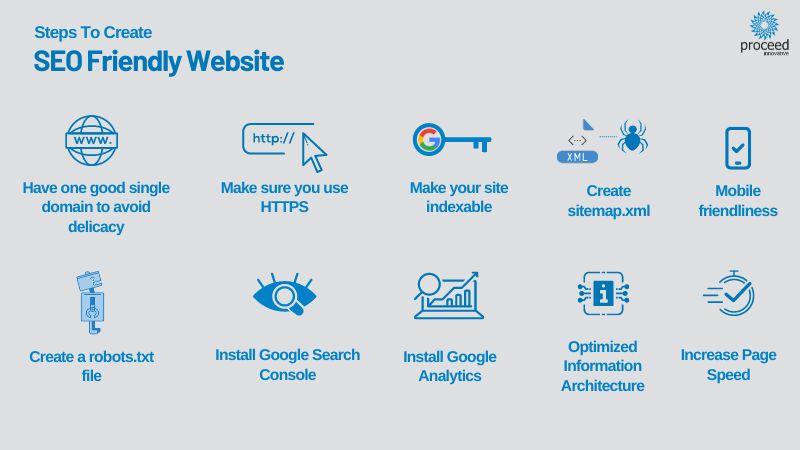Tube Rank: Your Guide to Video Success
Discover tips and insights for optimizing your video presence.
Designing for Clicks: Crafting SEO-Friendly Websites That Wow
Unlock the secrets to crafting stunning SEO-friendly websites that boost clicks and captivate audiences—design like a pro today!
5 Essential Principles for Designing SEO-Friendly Websites
Designing SEO-friendly websites requires a solid understanding of key principles that enhance visibility and user experience. Firstly, the structure of your website plays a critical role; ensure that your site is organized with a logical hierarchy and intuitive navigation. Utilize header tags (H1, H2, H3) to define content sections clearly, making it easier for search engines to crawl your pages. Additionally, implement a sitemap and ensure that your website is mobile-responsive, as more users rely on mobile devices for browsing.
Another vital principle is the use of quality content. Search engines favor websites that provide valuable and original content. Focus on incorporating relevant keywords naturally throughout your articles, but avoid excessive keyword stuffing, which can lead to penalties. Furthermore, optimize images by using descriptive file names and alt tags to enhance accessibility and improve search rankings. Finally, prioritize loading speed by minimizing large files and utilizing caching techniques, as page speed significantly affects your site's user experience and SEO performance.

How to Balance Aesthetics and SEO in Web Design
Balancing aesthetics and SEO in web design is crucial for creating a website that not only attracts visitors but also ranks well in search engines. A visually appealing design can engage users, making them more likely to stay on your site longer. However, this shouldn't come at the expense of SEO best practices. To strike the right balance, consider using responsive design that adjusts to various screen sizes without compromising visual elements. Additionally, incorporate clean code and optimize images to ensure fast loading times, which are essential for both user experience and search engine rankings.
One effective strategy to harmonize aesthetics with SEO is to prioritize user experience (UX). Design your website layout and navigation intuitively, enabling users to find what they need easily. Utilize heading tags and structured data to enhance the content's discoverability while maintaining an appealing vibe. Consider creating a visually striking blog section that features engaging images alongside well-optimized text, effectively driving traffic and keeping visitors engaged. By fostering both aesthetic appeal and technical SEO, your website can thrive in both user satisfaction and search engine visibility.
What Makes a Website Click-Worthy? Key Elements to Consider
Creating a click-worthy website requires a fine balance of aesthetics and functionality. First and foremost, visual appeal plays a crucial role; a well-designed website with a cohesive color scheme and engaging imagery can draw visitors in. Apart from the visual elements, user experience (UX) is paramount. An intuitive layout that allows users to navigate effortlessly will keep them on your site longer. Consider incorporating features such as:
- Clear calls-to-action (CTAs)
- Fast loading times
- Mobile responsiveness
Content quality is another key element of a click-worthy site. It's essential to provide valuable and relevant information that addresses the needs or interests of your target audience. This can include engaging blog posts, informative videos, or interactive elements that encourage user participation. Additionally, be sure to optimize your content for SEO by incorporating relevant keywords naturally and improving your site's visibility. Maintaining a consistent posting schedule and actively engaging with your audience can further enhance your site's appeal and keep visitors coming back.